If There Is Going to Be a Total Lunar Eclipse Tonight Then You Know That
Lunar eclipses: What are they & when is the adjacent one?
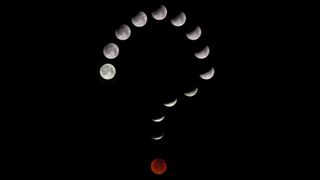
Lunar eclipses have been a favorite event for skywatchers for endless years. They occur when Earth's shadow blocks the sun's light, which otherwise reflects off the moon.
There are three types of lunar eclipses — full, partial and penumbral — with the most dramatic being a total lunar eclipse, in which Globe'due south shadow completely covers the moon. During a total lunar eclipse, the moon will appear bright cerise in the nighttime sky.
Throughout history, eclipses have inspired awe and fifty-fifty fear, especially when total lunar eclipses turned the moon blood-crimson, an effect that terrified people who had no understanding of what causes an eclipse and therefore blamed the events on this god or that.
Below, y'all'll find the science and history behind lunar eclipses and see a listing of the side by side ones on tap.
(If yous hope to snap a photo of a lunar eclipse, here'south our guide on how to photograph the moon with a camera. And if yous need imaging equipment, our best cameras for astrophotography and best lenses for astrophotography accept recommendations to make sure you're gear up for the next eclipse.)
Run into as well our guide to solar eclipses .
When is the adjacent total lunar eclipse?
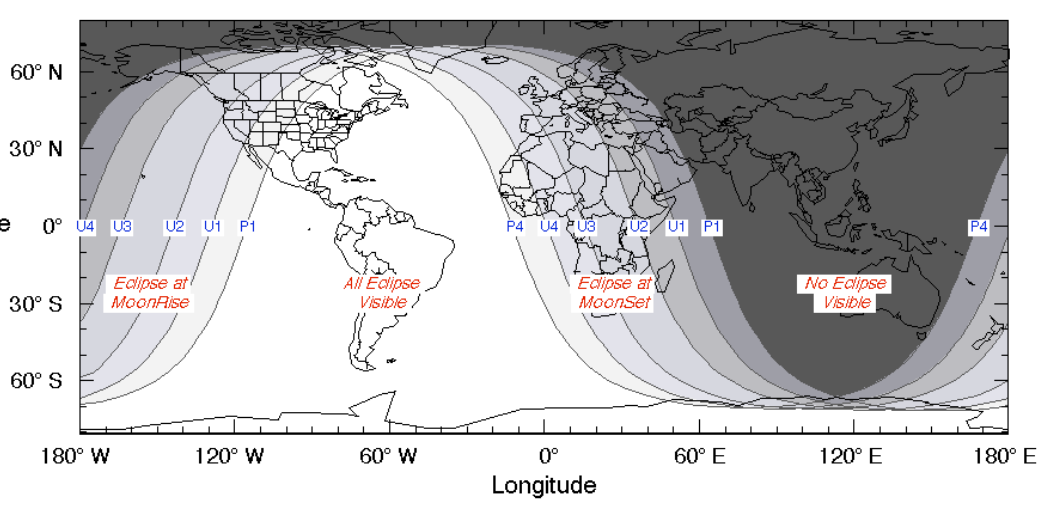
The next total lunar eclipse, or "blood moon," will occur May xv-16, 2022 and it will exist visible from North and South America, Europe, Africa and parts of Asia.
The partial and total phases of the Blood Moon full lunar eclipse in May volition exist visible from Europe, Africa and parts of Asia. But the entire eclipse from commencement to cease will exist visible from eastern North America, Key America and South America. The eclipse will meridian at 00:eleven a.m. EDT (0411 GMT).
The second and terminal lunar eclipse of 2022, another total lunar eclipse, will follow on Nov. viii, 2022 and information technology will be visible at least partially from Asia, Australia, North America, parts of northern and eastern Europe, the Chill and most of South America.
NASA keeps a list predicting lunar eclipses until 2100. They also keep data nearly by lunar eclipses. During the 21st century, World will experience a total of 228 lunar eclipses, co-ordinate to the space agency.
What lunar eclipses volition happen in 2023?
2023 will also meet two lunar eclipses.
The first lunar eclipse of this year will occur on May 5-six, 2023. This will be a penumbral lunar eclipse which happens when the sunday, World and moon are not perfectly aligned. When this happens, the Earth blocks just some of the sun's calorie-free from hitting the moon so just the outer shadow of the Globe, known equally the penumbra, shades the moon's face.
This eclipse will be visible, at to the lowest degree partially, from southern and eastern Europe, Antarctica, most of Asia, Australia, Africa as well equally the Pacific, Indian and Atlantic oceans. Nevertheless, fifty-fifty where visible this type of eclipse can be difficult to detect because it is subtle.
The second and final lunar eclipse of 2023 volition occur on Oct. 28-29 and it volition be a partial lunar eclipse. This eclipse will be visible at to the lowest degree partially from Europe, Asia, Australia, Africa, North America, northern and eastern South America, the Chill, Antarctica and the Pacific, Atlantic and Indian oceans.
What is a lunar eclipse?

A lunar eclipse can occur just at full moon. A total lunar eclipse can happen merely when the sun, World and moon are perfectly lined up — anything less than perfection creates a partial lunar eclipse or no eclipse at all. Some understanding of simple celestial mechanics explains how lunar eclipses piece of work.
Because the moon's orbit around World lies in a slightly different plane than Earth's orbit around the lord's day, perfect alignment for an eclipse doesn't occur at every full moon.
A full lunar eclipse develops over time, typically a couple hours for the whole event. Here's how it works: Earth casts two shadows that autumn on the moon during a lunar eclipse: The umbra is a full, dark shadow. The penumbra is a fractional outer shadow. The moon passes through these shadows in stages. The initial and final stages — when the moon is in the penumbral shadow — are non so noticeable, so the best part of an eclipse is during the centre of the outcome, when the moon is in the umbral shadow.
Related: How lunar eclipses work (infographic)
Full eclipses are a freak of catholic happenstance. Ever since the moon formed, about four.5 billion years ago, it has been inching abroad from our planet (by about 1.6 inches, or 4 centimeters per year). The setup correct now is perfect: the moon is at the perfect distance for Earth'due south shadow to cover the moon totally, but only barely. Billions of years from at present, that won't be the case.
According to NASA, two to four solar eclipses occur each year, while lunar eclipses are less frequent. "In whatever one agenda year, the maximum number of eclipses is four solar and three lunar," the bureau said. However, while solar eclipses can only exist seen along a roughly 50-mile wide path, each lunar eclipse is visible from over half the Globe.
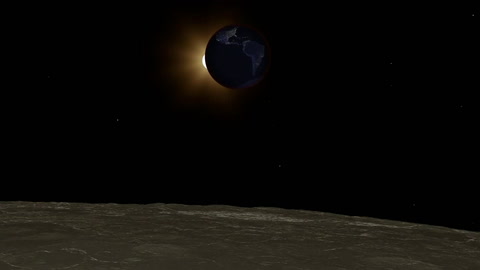
Types of lunar eclipses
Total lunar eclipse: Globe's full (umbral) shadow falls on the moon. The moon won't completely disappear, merely it volition be bandage in an eerie darkness that makes it easy to miss if you were non looking for the eclipse. Some sunlight passing through Earth'due south atmosphere is scattered and refracted, or bent, and refocused on the moon, giving it a dim glow even during totality. If y'all were continuing on the moon, looking dorsum at the dominicus, you'd run into the blackness disk of Earth blocking the unabridged sun, but yous'd also see a ring of reflected light glowing around the edges of Earth — that'due south the light that falls on the moon during a full lunar eclipse.
Partial lunar eclipse: Some eclipses are only partial. Just even a total lunar eclipse goes through a fractional stage on either side of totality. During the partial phase, the dominicus, Globe and moon are not quite perfectly aligned, and Globe'southward shadow appears to take a seize with teeth out of the moon.
"What people see from Globe during a partial lunar eclipse depends on how the sun, Earth and moon are lined up," according to NASA.
Penumbral lunar eclipse: This is the least interesting type of eclipse, because the moon is in Earth's faint outer (penumbral) shadow. Unless you're a seasoned skywatcher, yous likely won't notice the effect, in which the moon is subtly shaded by Earth'due south shadow.
"The outer role of World's penumbra is so stake that you lot won't find annihilation until the moon's edge has slid at least halfway in," Alan MacRobert, a senior editor at Sky & Telescope mag, said in a statement.
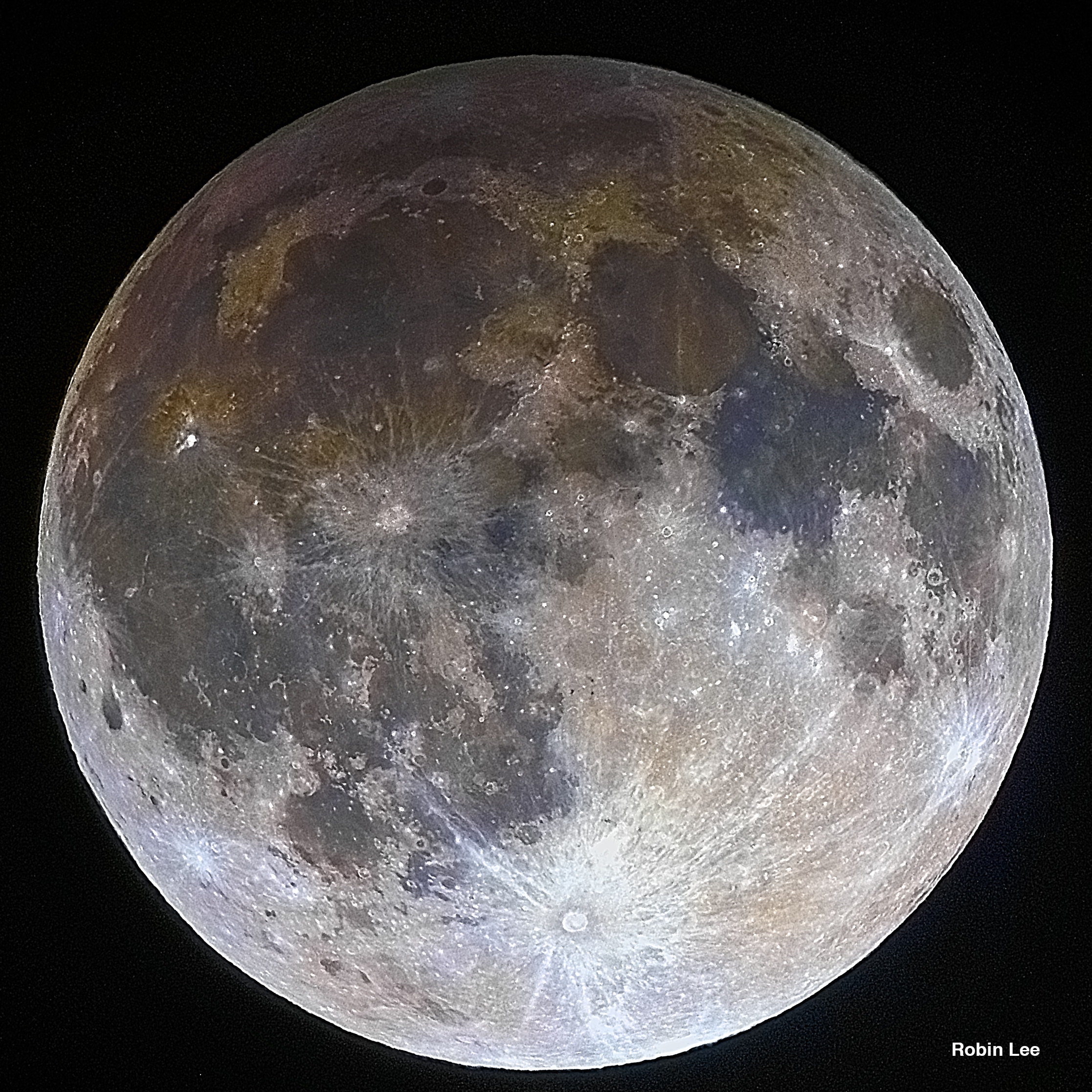
The beauty of a full lunar eclipse
The moon may turn cherry-red or coppery colored during the total portion of an eclipse. The ruddy moon is possible because while the moon is in full shadow, some low-cal from the sun passes through Globe's atmosphere and is aptitude toward the moon. While other colors in the spectrum are blocked and scattered by Globe'south atmosphere, red light tends to make information technology through easier. The effect is to bandage all the planet's sunrises and sunsets on the moon.
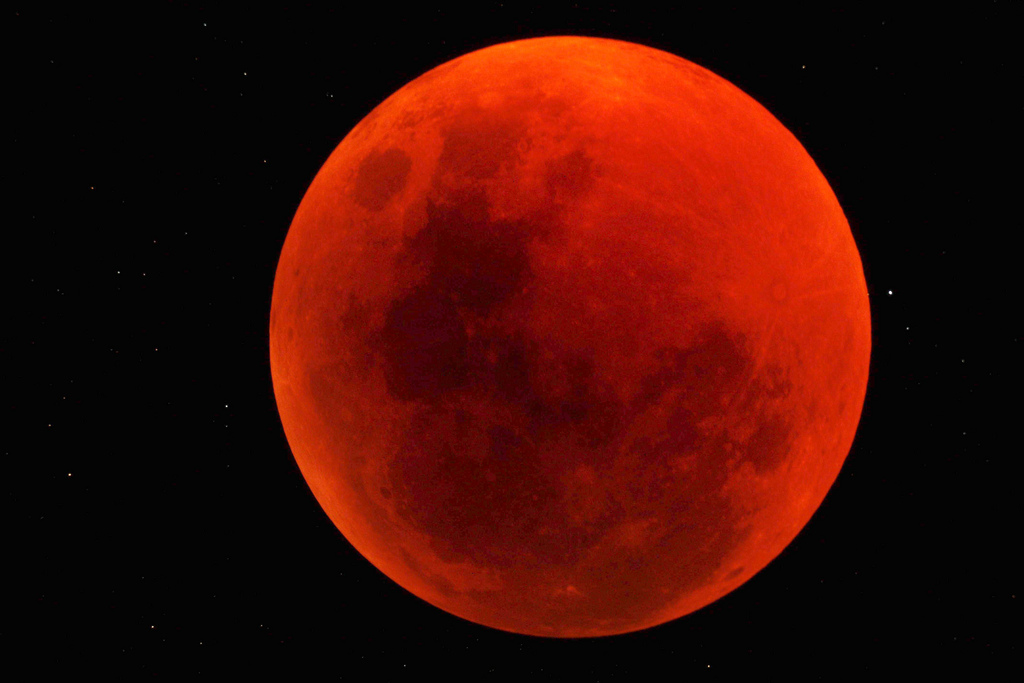
"The exact color that the moon appears depends on the amount of dust and clouds in the atmosphere," according to NASA scientists. "If there are extra particles in the temper, from say a recent volcanic eruption, the moon volition announced a darker shade of ruddy."
Christopher Columbus leveraged the appearance of a blood-cerise eclipse in 1504 to affright indigenous people in Jamaica and apply this fearfulness to get them to feed him and his crew. It was on Columbus' fourth and concluding voyage during which shipworms ate holes in the fleet's ships. Because of this, Columbus was forced to carelessness two ships, he so beached his last two ships in Jamaica on June 25, 1503.
The people there welcomed and fed the castaways, only after six months began to abound weary of taking care of the crew. Columbus' crew responded by assaulting, robbing and murdering some of the Jamaican people.
Columbus had an almanac that foretold a lunar eclipse on February. 29, 1504. He met with a local leader and told him the Christian god was angry with his people for no longer supplying food and that they should expect a sign of God'south displeasure iii nights afterward, when he would make the full moon appear "inflamed with wrath."
When the blood-carmine moon came to pass, the local population was terrified, co-ordinate to an account past Columbus' son.
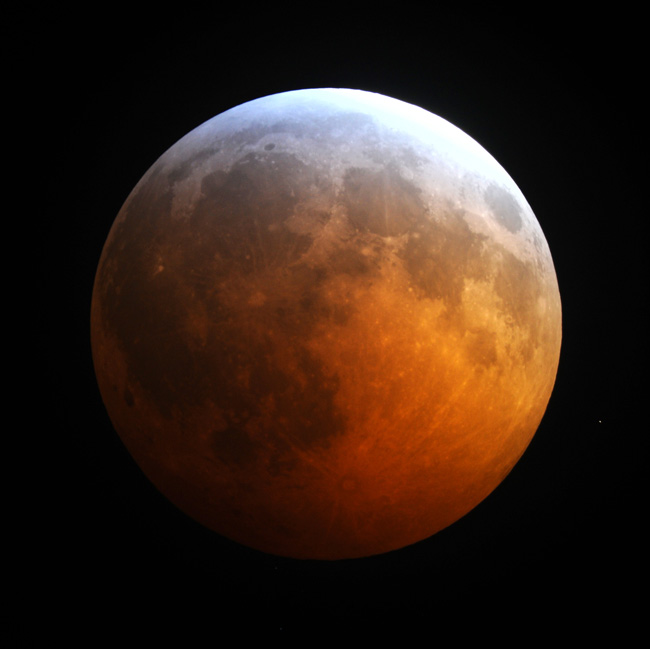
How to watch a lunar eclipse
Lunar eclipses are amidst the easiest skywatching events to observe.
To watch one, you simply go out, look upwards and enjoy. You don't demand a telescope or whatsoever other special equipment. Yet, binoculars or a small telescope will bring out details in the lunar surface — moonwatching is as interesting during an eclipse equally anytime. If the eclipse occurs during wintertime, bundle up if you lot plan to be out for the duration — an eclipse can take a couple of hours to unfold. Bring warm drinks and blankets or chairs for comfort.
If yous want to photo the next lunar eclipse, be sure to bank check out our guide past veteran astrophotographers Imelda Joson and Edwin Aguirre.
"We can go really adept science out of what happens to the surface of the moon during full lunar eclipses but once again, the cool affair is that the moon changes color," Noah Petro, a inquiry scientist at the Goddard Space Flight Center in Maryland, told Space.com. "It's something fun to encounter — it'due south benign, but it's a alter. And anytime we see [a] change in the skies it'south always kind of exciting."
Additional reporting by Nola Taylor Redd, Space.com contributor. This article was updated on October. 26, 2021 by Ben Biggs and again on Dec. 2, 2021 past Space.com senior writer Chelsea Gohd.
Join our Space Forums to go along talking space on the latest missions, dark heaven and more! And if you lot accept a news tip, correction or comment, let usa know at: community@infinite.com.
Source: https://www.space.com/15689-lunar-eclipses.html